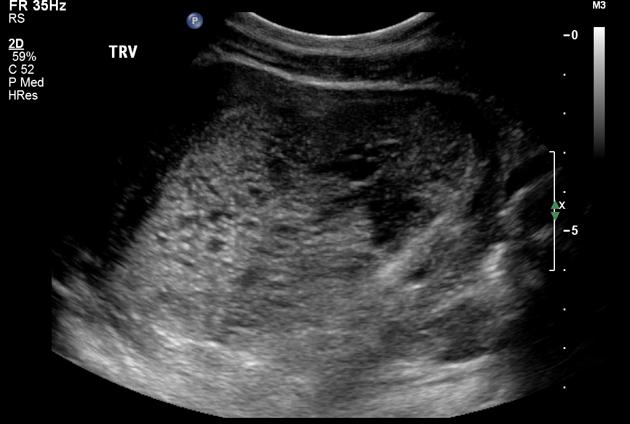Presentation
GP referral for dating scan
Patient Data

Thickened, hyper-reflective, vascular placenta with focal cystic changes
Case Discussion
A molar pregnancy occurs when there is an extra set of paternal chromosomes in a fertilized egg. This error at the time of conception transforms normal placental tissue into a growing cystic mass
A partial hydatidiform mole has a triploid karyotype in which two of the three chromosomal complements are paternal (diandric monogynic with a majority of 70% being XXY)
- Ratio of transverse to anteroposterior dimension of gestational sac greater than 1.5
- Fetus shows growth restriction in 80%
- Fetal nuchal translucency thickened in 59% of cases
Incidence is 2-3 times higher than a complete mole and occurs in 1 of 700 conceptions. Incidence in Southeast Asia is 7 to 10 times higher than in Europe or Australia
Positive stain for p57 and PHLDA2 (complete moles have no immunoreactivity)
Most partial moles miscarry before 10-12 weeks. Risk of progression to persistent gestational trophoblastic disease is 2-4% and the lungs are most common site of metastasis. Risk of second molar pregnancy is 1.7%




 Unable to process the form. Check for errors and try again.
Unable to process the form. Check for errors and try again.